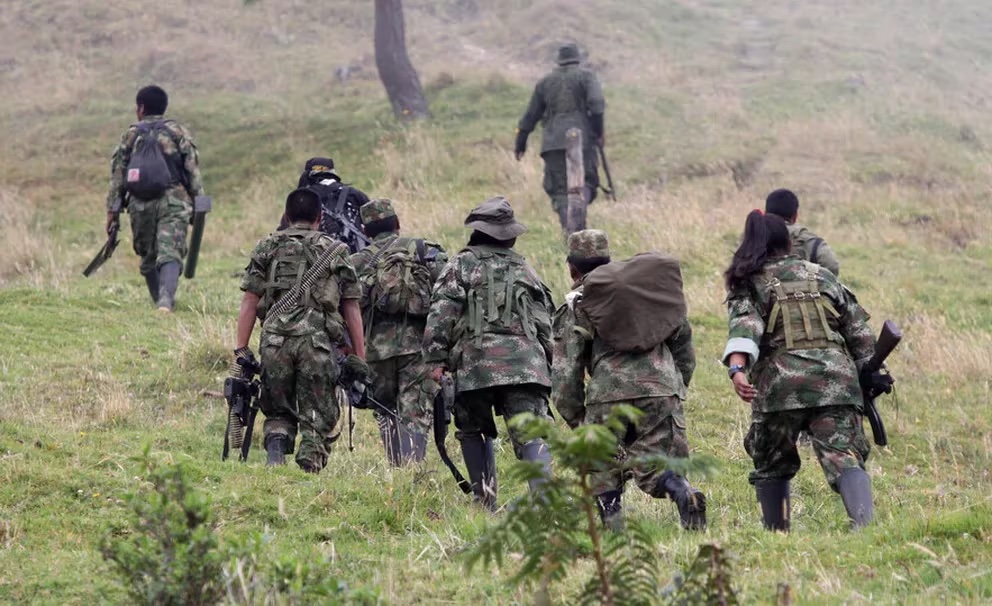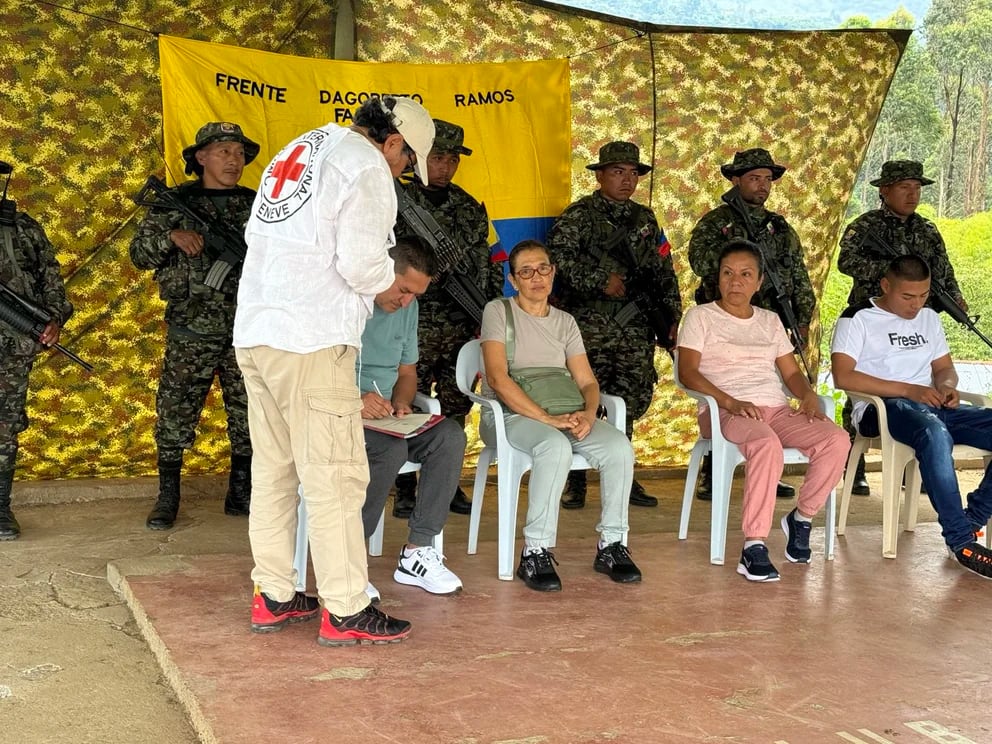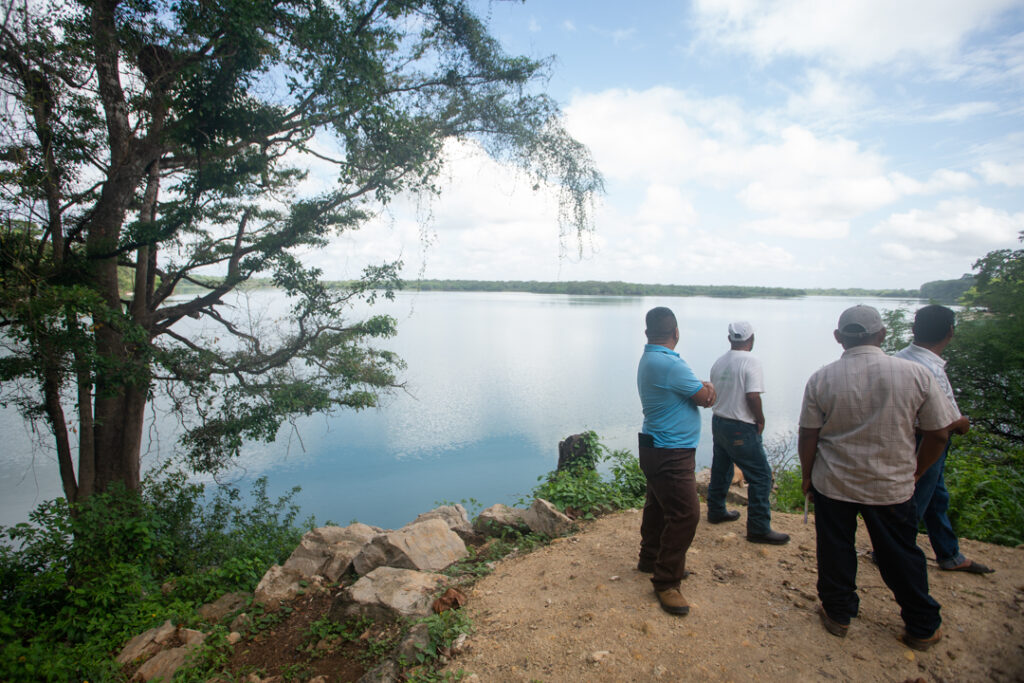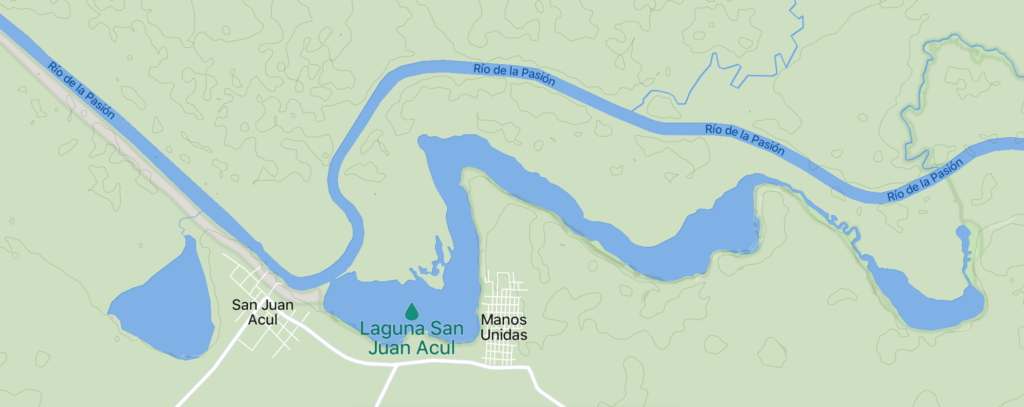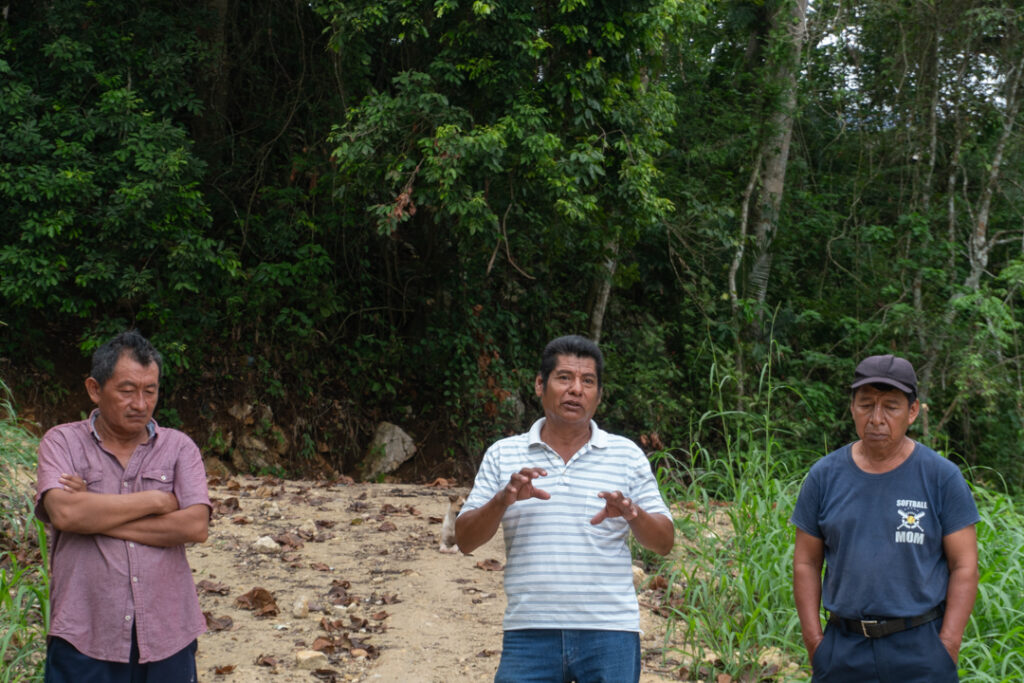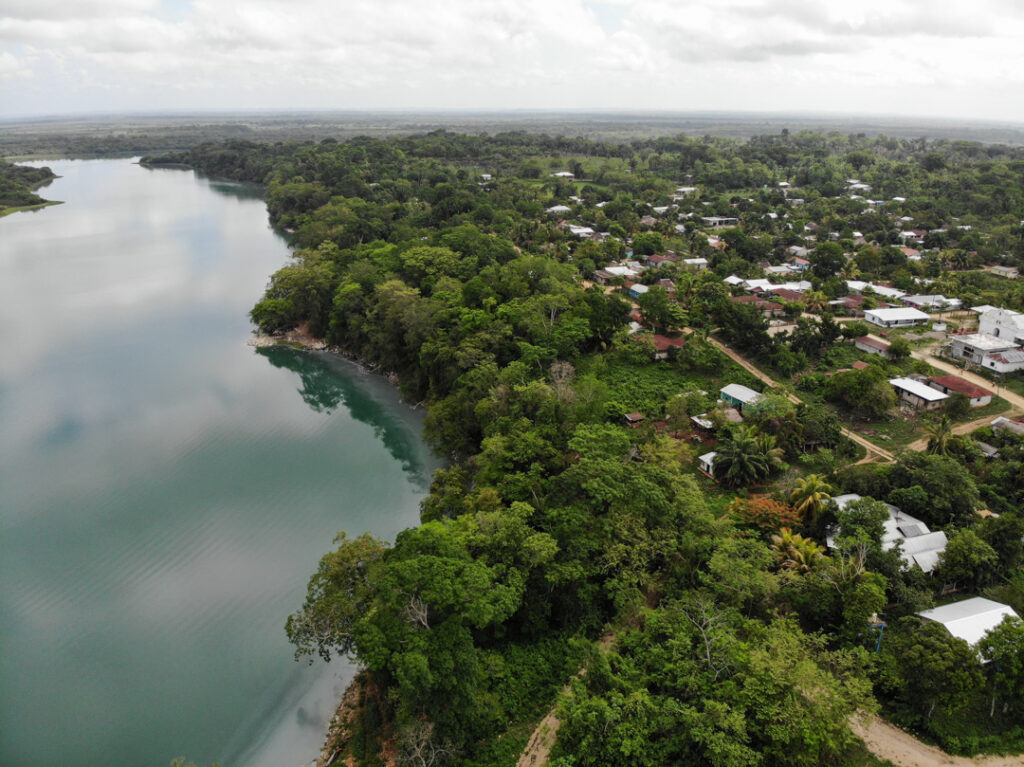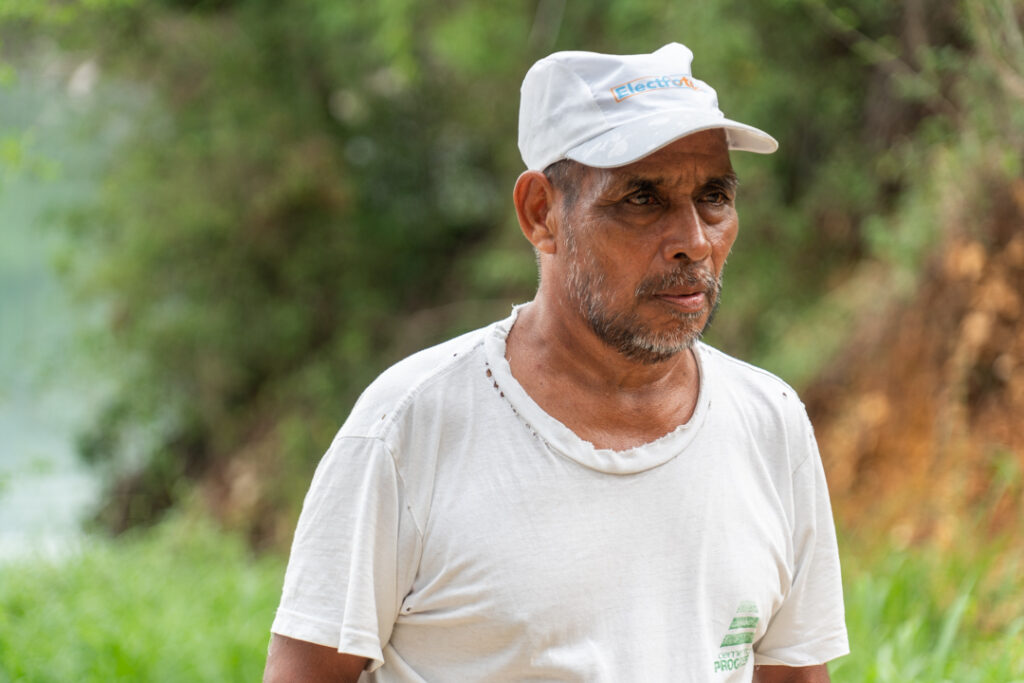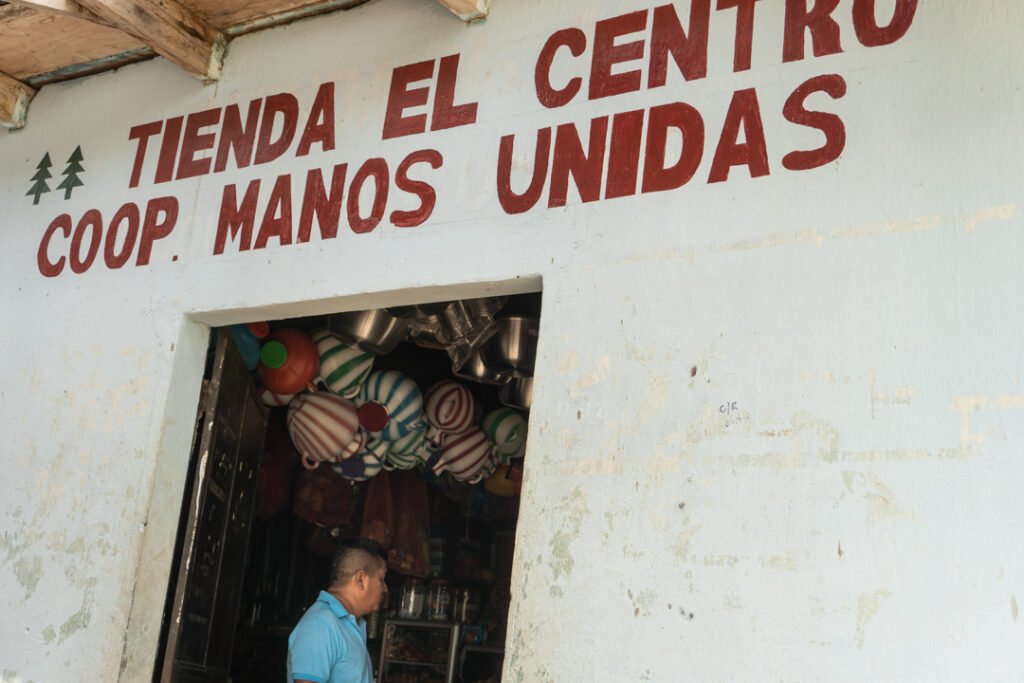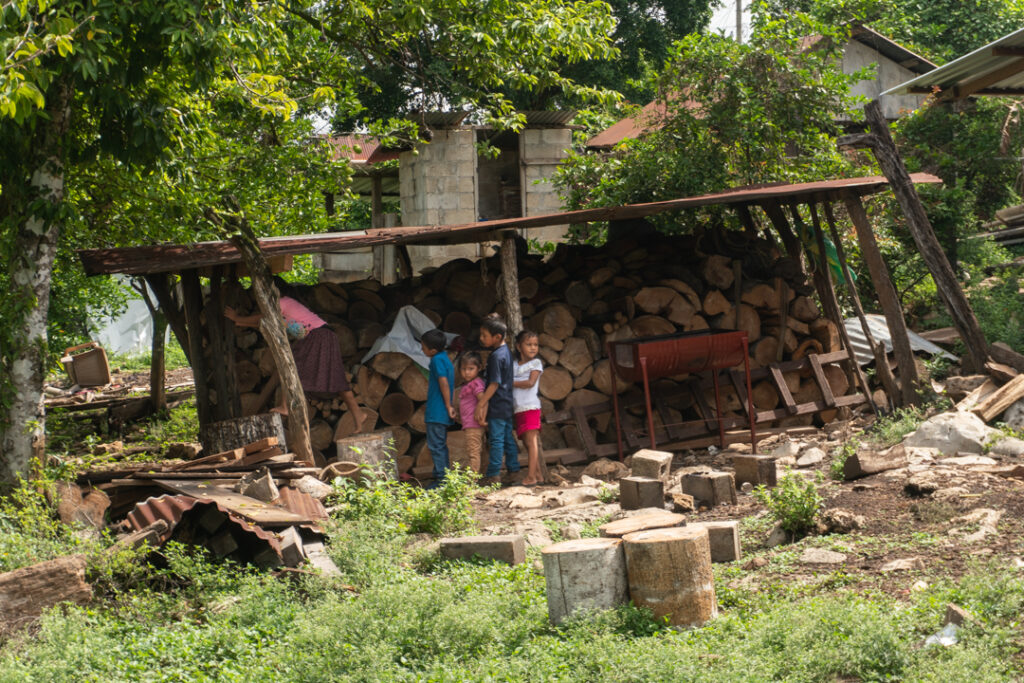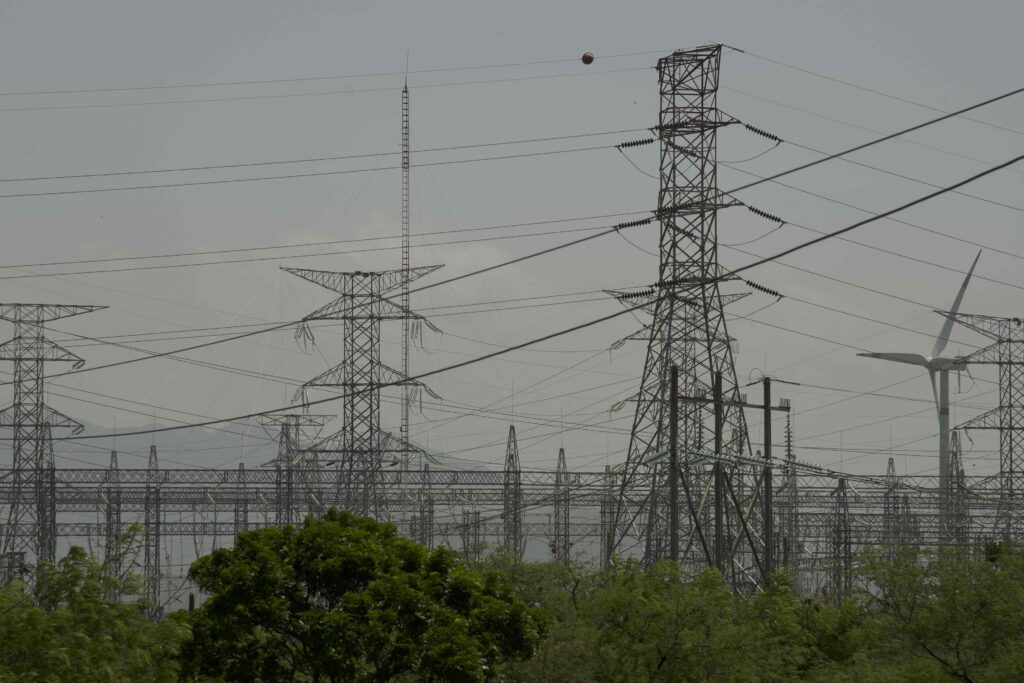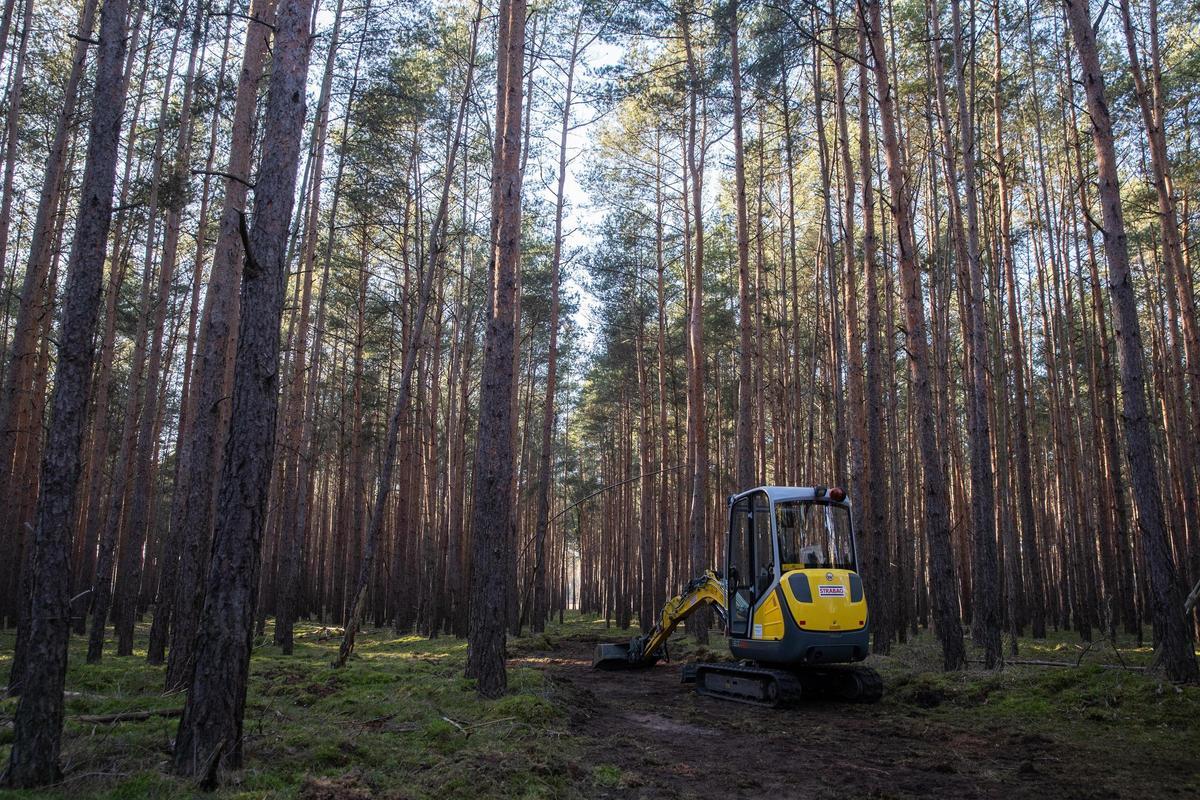
megaprojects
A días de las elecciones en México, comunidades la califican de “farsa”
Fuente: Avispa Midia
Por Sare Frabes
En portada: Participantes de la Asamblea Nacional por el Agua y la Vida durante protesta en Santiago Mexquititlán, Querétaro. Febrero, 2023. Foto: Santiago Navarro F
Colectivos, pueblos indígenas y organizaciones sociales se reunieron el pasado sábado (18) en la Casa de los Pueblos “Samir Flores Soberanes”, en la Ciudad de México, para llevar a cabo el foro “En medio de la farsa electoral, la guerra capitalista contra los pueblos”.
Las y los presentes compartieron análisis y reflexiones en torno a la violencia y represión que se vive en México, enfatizando que, con la denominada “Cuarta Transformación” (popularmente conocida como 4T), la militarización incrementó contra las comunidades indígenas, especialmente en territorios zapatistas en Chiapas.
“Grupos paramilitares y el crimen organizado operan con toda impunidad como garantes de la imposición no solo de megaproyectos de muerte como el Tren Maya, el Corredor Interoceánico y el Proyecto Integral Morelos; están al servicio del Estado y el gran capital para llevar a cabo el despojo del territorio, la Madre Tierra y la vida”, aseveraron mediante comunicado firmado por la Asamblea Nacional por el Agua y la Vida.
En medio del contexto electoral, las y los particpantes del foro sostuvieron que, el próximo 2 de junio, no está en disputa la democracia, sino el poder económico y político “que busca sostenerse con la militarización, con la impunidad, y con la acumulación de riqueza en las manos un@s cuant@s al servicio de las grandes transnacionales”.
“Las crisis en múltiples niveles del capitalismo y la devastación de la naturaleza están provocando fenómenos nuevos, que no habíamos observado o que no se observaban de manera tan aguda. Nuestro país, nos digan lo que nos digan, de un modo cada vez más creciente está siendo dominado, está siendo controlado por cárteles criminales que, de manera relativamente nueva, están poniendo sus miras en los territorios donde existe mayor concentración de riqueza natural y de agua”, enfatizó Carlos González García, integrante del Congreso Nacional Indígena.

Por ello, la Asamblea sostuvo que el plan de la 4T es sostener una guerra capitalista contra los pueblos y comunidades indígenas y para denunciarlo, destacaron las agresiones armadas contra comunidades autónomas zapatistas; la intimidación policial contra la comunidad otomí y Diego García, quienes mantienen la toma de la Casa de los Pueblos; así como la violencia contra Pueblos Unidos de la región choluteca, quienes resisten a la operación irregular de un basurero; casos de presos políticos; el encubirmiento militar en el caso Ayotzinapa, entre muchos otros.
Ante las agresiones, miembros de la comunidad Otomí de Santiago Mexquititlán pidieron no parar con la difusión de los casos, “de hacer acciones directas para seguir denunciando, visibilizando y arrancándole (al Estado) lo poquito de justicia que podemos seguir recuperando desde nuestras fuerzas como comunidades organizadas”.
Agresiones contra zapatistas
Durante el foro se denunció el incremento de las agresiones armadas contra las comunidades autónomas zapatistas, especialmente las realizadas por la Organización Regional de Cafeticultores de Ocosingo (ORCAO), quienes durante años han atacado impunemente a las Bases de Apoyo del EZLN (BAEZLN), provocando desplazamientos forzados, tortura, desapariciones e intentos de homicidio.
En lo que va del 2024, fueron desplazadas 28 personas BAEZLN de la comunidad La Resistencia. En enero, cuando se registraron las agresiones también fueron destruidas la Escuela Primaria Autónoma, 15 casas y siembras; además robaron una tienda y otros bienes de la comunidad.
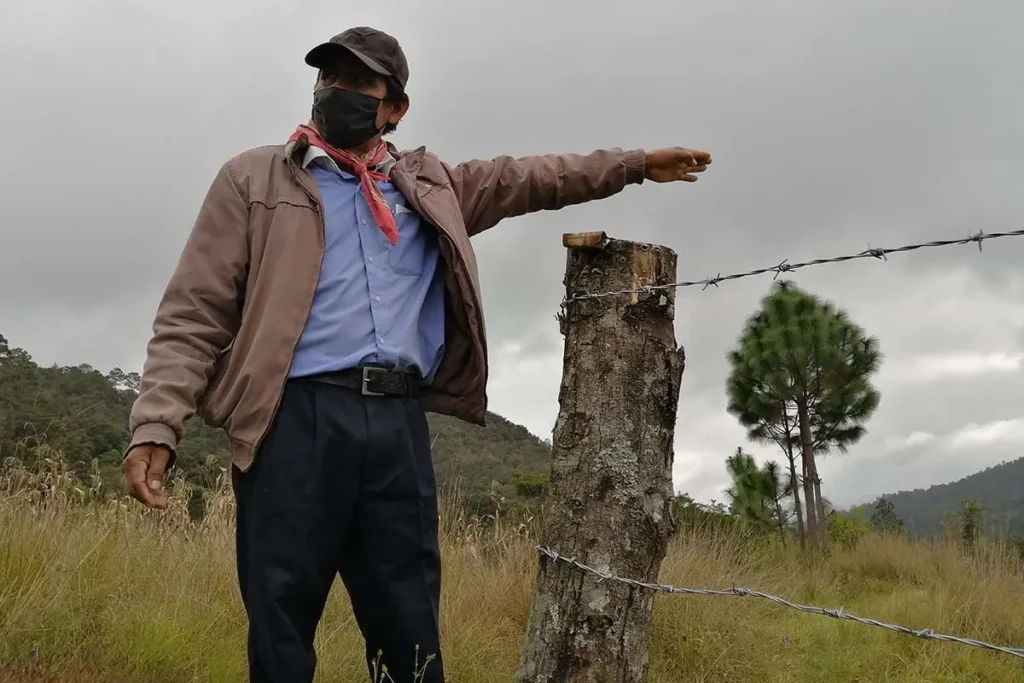
En el poblado autónomo de Emiliano Zapata quemaron un potrero de las bases de apoyo. Para febrero, integrantes de la ORCAO atacaron la comunidad autónoma zapatista de Moisés y Gandhi, donde registraron más de 100 disparos con arma de fuego de alto calibre.
Ante el incremento de la violencia, denunciaron la agresión armada, ocurrida en mayo del 2023 contra el integrante base de la base de apoyo Jorge López Sántiz, que puso en grave riesgo su vida. También mencionaron el caso del indígena chol, BAEZLN, José Díaz Gómez, quien desde el 25 de noviembre del 2022 es rehén del gobierno de Chiapas, pues se encuentra encarcelado acusado por robo con violencia, “como represalia por su adherencia política zapatista”.
La Asamblea sostiene que, programas sociales como Sembrando Vida, han empoderado a grupos criminales, exacerbando la violencia y el despojo de tierras colectivas. “La guerra integral de desgaste contra la autonomía zapatista, empezada desde hace décadas por los diferentes partidos políticos, ha sido intensificada durante este gobierno de la cuarta simulación”, señalan.
Guerra
De acuerdo a las y los participantes del foro, a través del territorio mexicano existen otros ejemplos de violencia contra los pueblos organizados, como es el caso del hostigamiento a la Comunidad Otomí en CDMX, quienes desde el año 2020 tomaron el Instituto Nacional de Pueblos Indígenas (INPI) en demanda de vivienda justa y por ello han sido objeto de violentos intentos de desalojo, así como de criminalización.
La Asamblea denuncia la complicidad del director del INPI, Adelfo Regino Montes, y del gobierno de la CDMX en estos ataques.
En Puebla, en la región Choluteca, diversos pueblos resisten desde el pasado 21 de marzo contra la operación de un relleno sanitario, de la empresa ProFaj Hidro Limpieza, mediante protestas y un campamento, pero indican que han recibido represión estatal.
“El gobierno envió un operativo con más de 500 policías y grupos de choque para forzar la entrada de camiones recolectores de basura, policías estatales y municipales dispararon en contra de los habitantes que resisten en las barricadas para impedir la entrada de dichos camiones, y tras muchas horas de represión dirigida hacia el plantón y barricadas, las unidades de policía y guardia nacional, así como los camiones de basura se retiraron”, sostienen mediante comunicado.
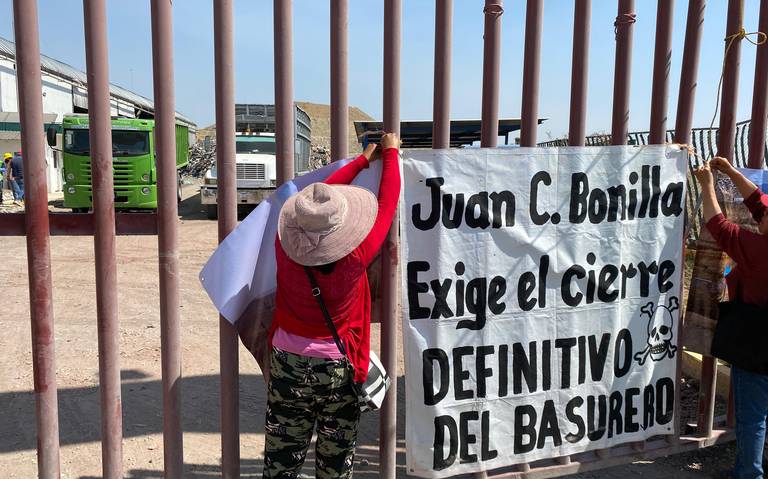
La Asamblea denuncia la criminalización de los defensores del territorio, como Miguel López Vega, primer preso político de la 4T y Alejandro Torres Chocolatl, ambos defensores del río Metlapanapa.
Destaca también el caso de la desaparición forzada de los 43 normalistas de Ayotzinapa. A punto de cumplirse una década y, a pesar de numerosas investigaciones que apuntan como actor clave la participación del ejército mexicano en el crimen, el gobierno continúa negándose a entregar documentos, en posesión de la Secretaría de la Defensa Nacional (Sedena), que podrían dar pistas para dar con el paradero de los estudiantes.
La Asamblea resalta que, en el cierre del sexenio de López Obrador la cifra de desaparecidos alcanza la cifra de 116 mil personas, en cuya mayoría de los casos no existen avances en la búsqueda por parte de las autoridades, sino que son las madres y familiares buscadores quienes realizan las investigaciones.
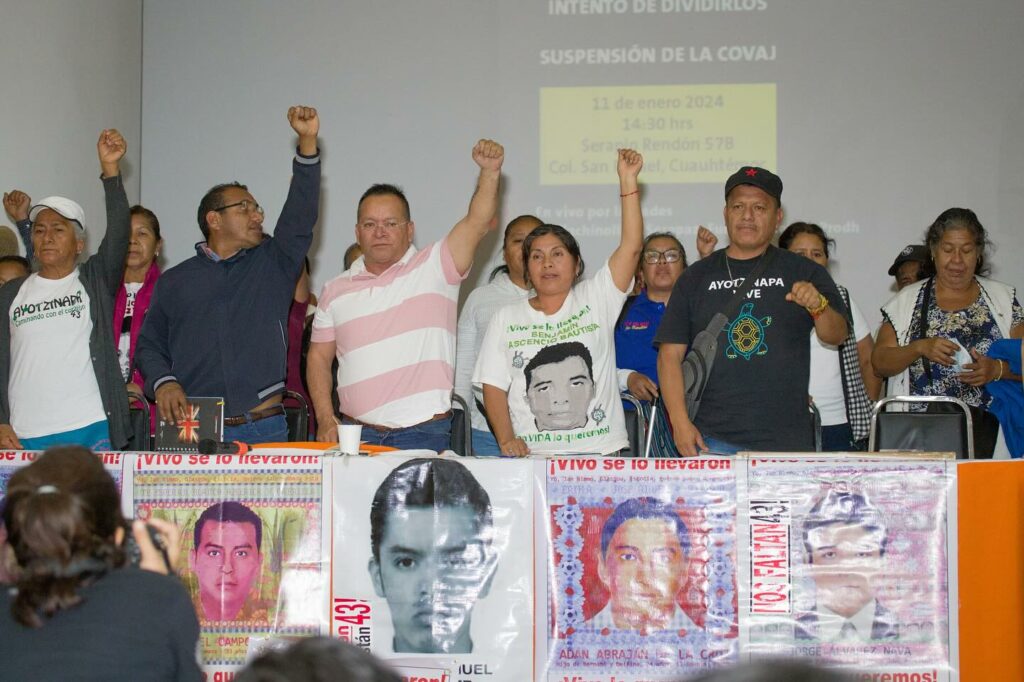
“Las madres y familiares están en constante riesgo de ataques por grupos criminales, policía, ejército alentados por el desdén con que el ejecutivo federal se refiere a ellas. Andrés Manuel López Obrador termina su sexenio manchado de la sangre de 7 madres buscadoras que fueron asesinadas por buscar a sus hijos”, acusan.
Las y los participantes del foro también exigieron justicia para las víctimas del incendio en la estancia migratoria de Ciudad Juárez, ocurrido en marzo de 2023 y donde murieron 40 migrantes. Ante ello, denunciaron la violencia sistemática contra las personas en movilidad, pues solo en 2023, durante su paso por México fueron detenidos 782 mil 176 migrantes, un récord histórico de personas que muchas veces son víctimas de funcionarios del Instituto Nacional de Migración, quienes los extorsionan o entregan a grupos del crimen organizado.
Los periodistas y defensores de derechos humanos también fueron mencionados por las agresiones en su contra. México se ha consolidado como uno de los países más peligrosos para el periodismo, con 56 periodistas asesinados en el último sexenio, que han ocurrido en medio de la legitimación de la violencia desde la presidencia contra quienes muestran una postura crítica hacia el gobierno y sus nexos criminales.
Por último, reconocieron la lucha de las y los presos políticos con casos como los defensores del territorio de San Juan Cancuc, Saúl Rosales Meléndez, los presos de Eloxochitlán, así como el caso de criminalización contra Karla y Magda de la Okupa Cuba.
En un llamado a la acción, la Asamblea Nacional por el Agua y la Vida se sumó a la iniciativa zapatista de “el común y la no propiedad” para mantener su lucha por autonomía y autodeterminación.
Comunicado en medio de la farsa electoral, la guerra capitalista contra los pueblos
AL CCRI CG EZLN
Al Ejército Zapatista de Liberación Nacional, EZLN
A la Comisión Sexta del EZLN
Al Congreso Nacional Indígena, CNI
Al Concejo Indígena de Gobierno, CIG
A Ma. de Jesús Patricio Martínez, Vocera del CNI-CIG
A los Pueblos, Tribus, Naciones, Comunidades y Barrios Originarios que nunca fueron conquistados
A la Sexta Nacional e Internacional
A las Redes de Resistencia y Rebeldía
A la Europa Insumisa, Digna y Rebelde
A quienes firmaron la Declaración por la Vida
A los medios libres, independientes, alternativos o como se llamen…
Herman@s Tod@s
Con la llegada de la “Cuarta Transformación”, su política de gobierno incrementó la militarización hacia los pueblos y comunidades indígenas, especialmente en territorio zapatista. Los grupos paramilitares y el crimen organizado operan con toda impunidad como garantes de la imposición no solo de megaproyectos de muerte como el Tren Maya, el Corredor Interoceánico y el Proyecto Integral Morelos; están al servicio del Estado y el gran capital para llevar a cabo el despojo del territorio, la Madre Tierra y la vida.
En medio de su “FARSA ELECTORAL”, miramos que, en las últimas semanas, nada importa que no sean sus votos, sus encuestas, sus debates, sus cifras y sus preferencias electoral; pero, sobre todo, su estrategia para atacar y descalificar a sus enemigos, como estategia de campaña.
Este 2 de junio, no está en disputa una “democracia”, mucho menos de izquierda. Lo que realmente está en disputa, es un poder económico y político, que busca sostenerse con la militarización, con la impunidad, y con la acumulación de riqueza en las manos un@s cuant@s al servicio de las grandes transnacionales. Su plan es sostener esta “Transformación de Cuarta”, con una GUERRA CAPITALISTA contra los pueblos y comunidades indígenas.
Ante la impunidad y violencia impuesta en nuestros territorios, desde la Asamblea Nacional por el Agua y la Vida…
DENUNCIAMOS
Primero: En los últimos años las agresiones a las comunidades autónomas zapatistas han ido en aumento. En la región de Moisés y Gandhi, municipio oficial de Ocosingo la Organización Regional de Cafeticultores de Ocosingo (ORCAO) ha atacado a las Bases de apoyo del EZLN (BAEZLN) lo que ha provocado desplazamientos forzados, tortura, desaparición forzada e intentos de homicidio.
En lo que va del año fueron desplazadas forzadamente 28 personas BAEZLN, habitantes del Gobierno Autónomo Local, comunidad La Resistencia, la cual ya había sufrido desplazamiento forzado en 2022 por un ataque. En enero de este año fueron destruidas la Escuela Primaria Autónoma, 15 casas, siembras cercanas, robo de una tienda y otros bienes de la comunidad, en el poblado Emiliano Zapata fue quemado un potrero de las bases de apoyo. En febrero, integrantes(ORCAO) realizaron más de 100 disparos hacia la comunidad autónoma zapatista de Moisés y Gandhi, más de 100 disparos con arma de fuego de alto calibre.No olvidamos que en mayo de 2023, Jorge López Sántiz BAEZLN fue víctima de una agresión armada que puso en grave riesgo su vida.
El dinero de los programas sociales ha servido para armar y empoderar a grupos criminales como la ORCAO aumentando la violencia hacia las comunidades autónomas zapatistas. En Chiapas como en el resto del país, el programa sembrando envidia ha agudizado la violencia por la disputa de la tierra, pues los ejidos y comunidades se confrontan, con el fin de acceder a los apoyos económicos individualizados que el programa ofrece.
La simulación de reforestación es el pretexto para despojar a los pueblos de las tierras de uso colectivo mediante la destrucción de la organización social y sus formas de vida, es decir, se busca romper la resistencia, facilitando la entrada de proyectos de muerte a favor del gran capital,con ayuda de las fuerzas represivas del estado, policía, Guardia Nacional y Ejército.
Los ataques de los grupos criminales son permitidos y solapados por el estado mexicano en sus tres niveles de gobierno. La guerra integral de desgaste contra la autonomía zapatista, empezada desde hace décadas por los diferentes partidos políticos, ha sido intensificada durante este gobierno de la cuarta simulación.
Segundo: Desde el 2020 la Comunidad otomí residente en la CDMX tomó las instalaciones del mal llamado Instituto Nacional de Pueblos Indígenas, en demanda de una vivienda justa. Desde el inicio de la toma, el hostigamiento por parte del Estado ha sido permanente; cortes de luz, un violento intento de desalojo en octubre del 2023 y el reciente señalamiento y criminalización al compañero Diego García Bautista quien acompaña la digna lucha de la comunidad otomí, así como presencia de judiciales en los alrededores del domicilio del compañero y de la misma Casa de los Pueblos muestra el desprecio del traidor Adelfo Regino Montes director del INPI y del gobierno de la cuarta transformación.
La Comunidad Otomí residente en la CDMX han sido constantes y firmes en el acompañamiento a todas las luchas justas, y son un ejemplo de organización, dignidad y resistencia. Por ello el mal gobierno dirige sus estrategias y ataques en contra de las y los compañeros.
Tercero: En Puebla, los pueblos de la región cholulteca sostienen un plantón para impedir la entrada de basura al relleno sanitario de San Pedro Cholula, un negocio criminal con el que se enriquecían empresarios y funcionarios. Desde el pasado 21 de marzo, al basurero no ha entrado ni un kilo más de basura y en respuesta a la resistencia de los pueblos cholultecas el gobierno envió un operativo con más de 500 policías y grupos de choque para forzar la entrada de camiones recolectores de basura, policías estatales y municipales dispararon en contra de los habitantes que resisten en las barricadas para impedir la entrada de dichos camiones, y tras muchas horas de represión dirigida hacia el plantón y barricadas, las unidades de policía y guardia nacional así como los camiones de basura se retiraron.
El gobernador de Puebla, Sergio Salomón Céspedes y el secretario de gobernación Javier Aquino Limón continúan defendiendo los intereses de la empresa ProFaj Hidro Limpieza, la cual operaba en el basurero, arremeten contra los pueblos abriendo carpetas de investigación y órdenes de aprehensión en contra de pobladores de la región. Sin embargo, la lucha de los pueblos cholultecas continúa y haciendo valer su autodeterminación y autonomía, no darán marcha atrás.
En este sexenio la violencia del Estado se recrudeció contra los pueblos cholultecas: Miguel López Vega primer preso político de la 4a transformación y Alejandro Torres Chocolatl perseguido, ambos defensores del río Metlapanapa. No olvidamos el operativo con más de 500 elementos de la guardia nacional, policía estatal y municipal para desalojar a los pueblos de Altepelmecalli y entregar las instalaciones a la empresa criminal Bonafont Danone, tampoco olvidamos la represión de la policía estatal y municipal en el pueblo de San Lucas Nextetelco contra quienes se opusieron a la construcción de un complejo policiaco.
Cuarto: A casi 10 años de la desaparición forzada de los 43 normalistas de Ayotzinapa, del gobierno solo se sigue recibiendo desprecio. Tras numerosas investigaciones en las que se apunta como parte fundamental de la desaparición la participación del ejército, se ha negado a los padres y madres la entrega de documentos de la SEDENA que son clave para el hallazgo de los normalistas. Desde el ejecutivo federal se ha señalado al abogado Vidulfo Rosales como “enemigo del sistema” – una cruenta persecución a compañeros que durante casi 10 años no han dejado la lucha por encontrar con vida a los 43 normalistas.
Quinto: Más de 116 mil desaparecidxs es la cifra con la que cierra el gobierno. La mayoría de los casos sin avances en la búsqueda, son las madres buscadoras y familiares quienes han realizado el cruel trabajo de encontrarles, en muchos casos han encontrado solo restos y con presión a las instituciones para que hagan los procesos de reconocimiento, se ha logrado dar con sus familias para otorgarles un poco de paz. Pero miles y miles de familias siguen sin saber nada de quienes les fueron arrebatados. Las madres y familiares están en constante riesgo de ataques por grupos criminales, policía, ejército alentados por el desdén con que el ejecutivo federal se refiere a ellas. Andrés Manuel López Obrador termina su sexenio manchado de la sangre de 7 madres buscadoras que fueron asesinadas por buscar a sus hijos.
Sexto: En 2023 México detuvo a 782.176 migrantes, el récord histórico. Ninguna de esas personas ha cometido un delito. Migrar y buscar asilo es un derecho humano e internacional. La violacion, secuestro, extorsion y asesinato de migrantes es muy comun. 6 de 10 mujeres son violadas en su camino por México. Según datos oficiales, cada mes, cerca de 41 migrantes en México son víctimas de robos, secuestros, extorsión, chantaje, trata y retención ilegal. Sin embargo, el número real es muchísimo más alto; no denuncian por miedo, falta de derechos, y porque muchas veces es el propio INM el que está extorsionando y entregándoles al crimen organizado.
Exigimos justicia y reparación integral del daño a las víctimas del incendio en la estancia migratoria de Ciudad Juárez, ocurrido en marzo de 2023. El INM dejó morir a 40 migrantes – fue un crimen del estado. Las estaciones migratorias son en realidad cárceles para personas inocentes y deberían eliminarse.
Séptimo: La libertad de expresión e investigación es castigada con la muerte en este país, en el último sexenio 56 periodistas y comunicadores comunitarios fueron asesinados por hacer pública la verdad. México es ahora uno de los países más peligrosos para ejercer el periodismo. El ejecutivo federal legitima la violencia hacia el periodismo, quienes muestran una postura crítica hacia su gobierno y sus nexos criminales.
Octavo: El patrón sistemático de criminalización, es una auténtica fábrica de culpables, más aún cuando se trata de pueblos indígenas que defienden la tierra y el territorio. El racismo y desprecio es el motivo para impedir el ejercicio de los derechos políticos, a la autonomía y autodeterminación. La fábrica de culpables se caracteriza por la impunidad con la que operan las instancia de ejercer la procuración de juticia:
• Colusión entre Fiscalía del Estado y el Poder Judicial del estado
• Participación cómplice de la Fiscalía de Justicia Indígena utilizada para el control de los pueblos.
• Acusaciones falsas, tortura, uso excesivo de la prisión preventiva oficiosa y de testigos falsos
• Detenciones con la participación de efectivos del Ejército, la Guardia Nacional (GN); un Poder Judicial cómplice inactivo.
• Detenciones arbitrarias que buscan castigar ejemplarmente la defensa de los derechos humanos, de la tierra y el territorio, y principalmente, la criminalización de defensores de la madre tierra y el territorio, amenazan a toda la comunidad, es un mecanismo de represión, con la intención de anular a quienes defienden el derecho a la vida, desde su propia identidad, sus formas de organizarse y desde sus autonomías como pueblos originarios.
Ejemplos sobren:
JOSÉ DÍAZ
José Díaz Gómez indígena Cho´l y campesino, es rehén del Gobierno Del Estado de Chiapas y víctima de la fábrica de culpables, como represalia a su adherencia política zapatista. Está encarcelado injustamente desde el 25 de noviembre de 2022, acusado falsamente de robo ejecutado con violencia.
José fue detenido arbitrariamente, con uso excesivo de la fuerza, fue torturado, desaparecido e incomunicado por la policía especializada adscritos a la Fiscalía del Distrito Selva. En la fiscalía le obligaron a poner su huella y firmar varios papeles en blanco. No fue asistido por un traductor de su lengua originaria, ni por un abogado. Los jueces y fiscales extienden el proceso y la prisión preventiva oficiosa (prisión sin sentencia).
La salud y por ende la vida de José está en riesgo por hacinamiento carcelario, y precaria atención médica. Él comparte la celda con otras 18 personas en un espacio de aproximadamente 3 pr 3 metros; presenta dificultar para dormir -solo logra conciliar el sueño 2 o 3 horas al día-; lo que da cuenta de la existencia de condiciones inhumanas de reclusión, dicho más claramente, sobrevive en condiciones de TORTURA.
PRESOS DE SAN JUAN CANCUC.
Los defensores mayas tseltales de San Juan Cancuc: Manuel Sántiz Cruz, Agustín Pérez Domínguez, Juan Velasco Aguilar, Martín Pérez Domínguez y Agustín Pérez Velasco, están encarcelados injustamente en San Cristóbal de las Casas, Chiapas, desde hace dos años por haber resistidO, mediante la organización comunitaria, a la militarización de su territorio y la instalación de megaproyectos, como la presa hidroeléctrica y la súper carretera San Cristóbal- Palenque. La Fiscalía de Justicia Indígena les fabricó delito y todos fueron condenados a 25 años de cárcel por homicidio calificado, a pesar de haberse evidenciado en los juicios que las pruebas eran inconsistentes al tratarse de un delito fabricado.
SAÚL ROSALES MELÉNDEZ.
En julio del 2022 fue arrestado el presidente comunitario de San Pedro Tlalcuapan, con el falso cargo de homicidio. Saúl Rosales había participado en la defensa del bosque de la Matlalcuéyetl y esa fue la verdadera razón del castigo que ahora el Estado le impone. El pasado 15 de marzo fue sentenciado a 20 años de cárcel.
PRESOS DE ELOXOCHITLÁN DE FLORES MAGÓN.
Tras 9 años de lucha y resistencia, el pueblo digno de Eloxochitlán de Flores Magón ha arrancado al Estado las libertades de 4 compañeros presos acusados falsamente de homicidio por parte del mal gobierno de Oaxaca y la familia Zepeda pese a los múltiples amparos ganados. Quedan 3 compañeros presos por los cuales seguimos exigiendo libertad inmediata: Alfredo Bolaños, Fernando Gavito y Francisco Durán.
KARLA Y MAGDA.
En abril del 2022 Karla y Magda fueron detenidas en medio de un megaoperativo para desalojar a la Okupa Cuba realizada en las instalaciones de la CNDH. Dicha okupa se realizó en solidaridad con las madres de mujeres asesinadas a quienes dicha institución despreció y dejó en el olvido. Acusadas de delitos que no cometieron (robo agravado, daño a la propiedad y delitos contra la salud), Karla y Magda permanecieron 10 meses encerradas en la prisión de Santa Marta Acatitla. La presión de familiares y colectivas solidarias lograron su libertad en febrero del 2023, sin embargo su carpeta de investigación se reabrió por nuevas acusaciones, con lo cual corren el riesgo de volver a prisión.
Noveno: La estigmatización también ocurre a las organizaciones que defienden los derechos humanos tal es el caso del Centro de Derechos Humanos Fray Bartolomé de Las Casas (Frayba) y el Centro de Derechos Humanos Miguel Agustín Pro Juárez (Centro ProDH), descalificados reiteradamente por Andrés Manuel López Obrador en las mañaneras al calificarlos de conservadores y exagerar la violencia que reportan dichas organizaciones.
Estas declaraciones ponen en riesgo a las personas defensoras, ya que no se puede negar que México sigue siendo uno de los países más peligrosos para la defensa de los derechos humanos y el periodismo. Entre enero de 2019 y febrero de 2024 se han registrado al menos 103 asesinatos de personas defensoras de la tierra, más de 40 periodistas,además 38 personas defensoras o periodistas fueron desaparecidas, 25 recuperaron su libertad y 13 siguen desaparecidas.
Hoy el gobierno de Andrés Manuel López Obrador reprime y desacredita a todo aquel que no piensa como él, como en el pasado lo hicieron los malos gobiernos de los diferentes partidos políticos.
Ante los embates del gobierno y el capital en contra de quienes defendemos la vida, la libertad y la dignidad, Nosotrxs respondemos con autonomía y autodeterminación. Desde este espacio de encuentro y organización, hacemos nuestra la iniciativa zapatista, para que sin importar calendario y/o geografía, nos sumamos al proceso de construcción de “EL COMÚN Y LA NO PROPIEDAD”. Hacemos nuestra, la defensa del Decreto que prohíbe la existencia de basureros, la extracción de agua para fines industriales y la contaminación de la misma en la región cholulteca; el Decreto que prohíbe la minería en Morelos; la lucha y resistencia de la Casa de los Pueblos y Comunidades Indígenas “Samir Flores Soberanes”; la toma del pozo de Barrio Cuarto en Santiago Mexquititlán; la recuperación de la biblioteca de San Gregorio Atlapulco, hoy Tlamachtiloyan; la defensa del río Santiago en Jalisco; la exigencia de remediación de los rellenos sanitarios en Santa María Coapan, Puebla y los Laureles, Jalisco; la unificación nacional de familias buscadoras; la instalación del Campamento universitario por Palestina en la UNAM; la decisión de los pueblos llevada a la acción por la defensa de la vida y el territorio.
Hacemos nuestras las exigencias por la libertad de todos los presxs políticxs; exigimos la inmediata presentación con vida de nuestros 43 Normalistas de Ayotzinapa, desaparecidos forzadamente por el Ejército y los más de 116 mil desaparecidos en México, justicia para Verónica Guerrero, Justicia para Samir Flores Soberanes y todos los defensores del territorio, periodistas, mujeres y madres buscadoras asesinadas.
ATENTAMENTE
Por la Reconstitución Integral de nuestros Pueblos
Agua, Tierra y Libertad
Zapata Vive, la Lucha Sigue
Samir Vive la Lucha Sigue
Alto a la Guerra en contra de los Pueblos Zapatistas
Hasta que la Dignidad y la Justicia se hagan costumbre
Porque Vivos los Llevaron, Vivos los Queremos
Viva el Ejército Zapatista de Liberación Nacional, EZLN
Viva el Congresos Nacional Indígena, CNI-CIG
Libertad para Saúl Rosales Meléndez, de San Pedro Tlalcuapan, Tlaxcala
Libertad para José Díaz, Base de Apoyo Zapatista
Libertad para Alfredo Bolaños, Fernando Gavito, Francisco Durán, Marcelino Miramón
del Pueblo de Eloxochitlán de Flores Magón, Oaxaca
Libertad para David Hernández de Puente Madera, Oaxaca
Un Nosotrxs sin Estado
No al Tren Maya
No al Proyecto Integral Morelos
No al Corredor Interoceánico
ASAMBLEA NACIONAL POR EL AGUA Y LA VIDA
